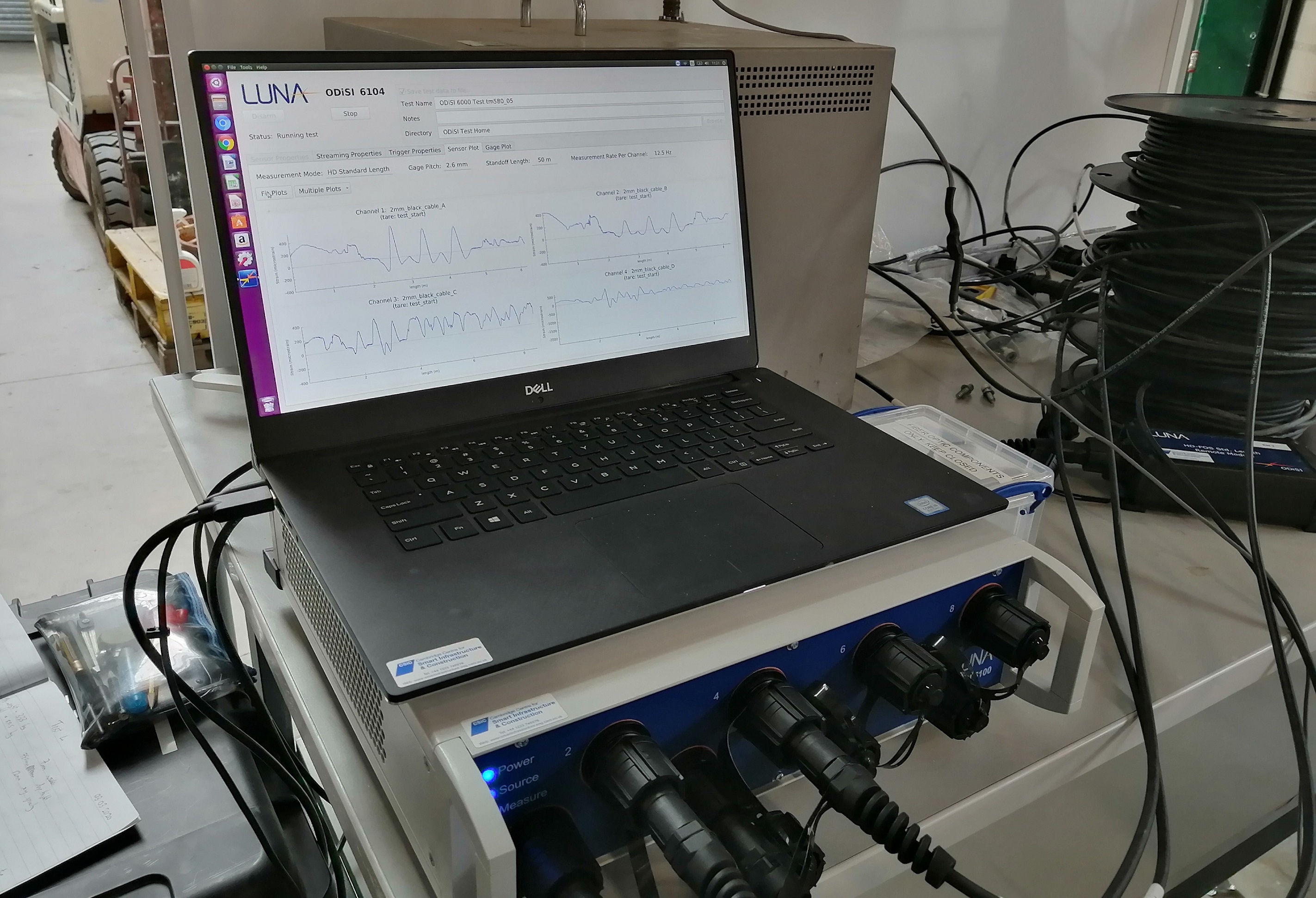Submitted by Shelley Arora-Tailby on Thu, 14/01/2021 - 15:01
The occurrence of sinkholes during construction can have devastating consequences. The development of an early warning system to predict the early formation of sinkholes before they cause property damage or even loss of life would be of huge benefit to the infrastructure and construction industry.
Photo: Testing with the LUNA ODiSl in progress with the cables recording strain as the sinkhole is developed at the base of the box.
Sinkholes are the result of a ground surface collapse into a subterranean void. They can occur without apparent warning and can cause catastrophic damage to infrastructure as well as loss of life. The potential to include an early warning system in the construction of infrastructure, where sinkholes can have disastrous consequences (for example roads, railways and runways), means that asset owners can monitor the risk for sinkhole formation in real time and intervene when such risk becomes great.
As part of a wider study into characterising sinkhole formation, the Cambridge Centre for Smart Infrastructure and Construction (CSIC) have been investigating the incorporation of fibre optic cables into earthworks to provide improved information on the location, mechanisms and magnitude of ground movements in real time. With a potential to monitor tens of kilometres with a single fibre optic cable, this technology could be ideal for developing of an early warning system for surface or near-surface settlement.
To investigate, CSIC conducted a laboratory test using a small-scale model to determine whether fibre optic cables laid in the ground were able to locate potential sinkholes as they were developing. The model involved the use of a trapdoor to simulate the formation of the sinkhole and fibre optic cables laid on the soil at various heights above the trapdoor. A Perspex window positioned on the side of the model allowed photographs of the soil movement to be taken. The photographs were analysed using particle image velocimetry to calculate the soil displacement and strain, and used to correlate this to the recorded strain in the fibre optic cables.
The investigation was made possible using the new NRFIS Luna ODiSI (Optical Distributed Sensor Interrogator) 6100 which operates based on Optical Frequency Domain Reflectometry (OFDR) technology. The Luna ODiSL enables monitoring of fibre optic cables to an incredibly high spatial resolution of less than 2.6 mm. Previous analysers used for distributed monitoring of fibre optic cables have only been able to measure to a minimum resolution of 500 mm, too large for typical laboratory testing.
The Luna Analyser allowed the project team to imitate the intended full-scale application of DFOS in a small-scale laboratory environment. Preliminary results showed the formation of a clear strain signature both in the ground close to the ‘sinkhole’ and closer to the surface which correlated well to the measured movement in the soil.
Overall the investigation demonstrated the strong potential for fibre optic technology to be used as a sensor for small ground movements and to give an indication of where potential voids are being formed. Moving forward, further detailed analysis are required to give more robust correlations of the sinkhole size and location to the strain pattern observed in the fibre optic cable.
This project is funded by the Cambridge Centre for Smart Infrastructure and Construction (CSIC) Research & Development Seed Fund. It was led by Dr Christelle Abadie, University Lecturer in Civil Engineering, with assistance from CSIC Research Associates Dr Xiaomin Xu and Dr Talia da Silva Burke. Testing was conducted by Gianluigi Della Ragione, CSIC Summer Intern 2019, and Tobias Moller, Department of Engineering 4th year student.
All equipment and laboratory facilities at the UKCRIC NRFIS are open and available to industry and academic institutions to support the delivery of interconnected, integrated, and interdisciplinary research for UK infrastructure.
For further details about the Luna ODiSI analyser available at NRFIS, or to find out more about booking our facilities, please contact one of the NRFIS team members to discuss your project requirements.





